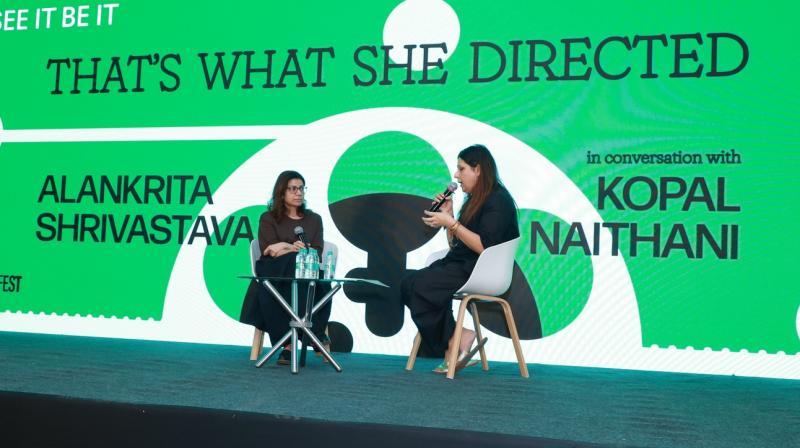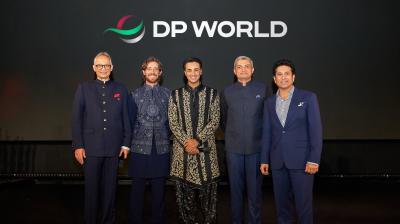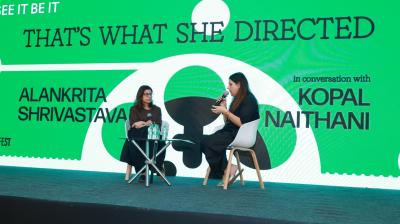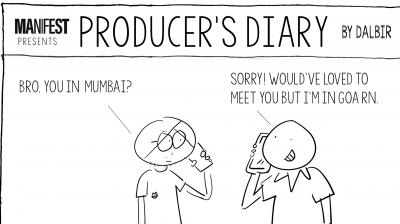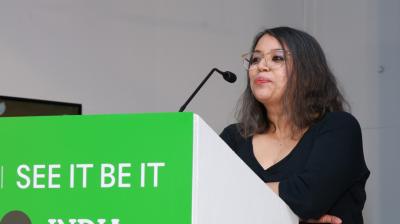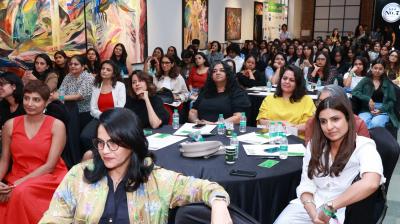The first Indian edition of Cannes Lions’ See It Be It programme, organised by Indian Creative Women and Manifest in association with Snowball Studios, unfolded in Mumbai on 14 November.
The final session of the day was a fireside chat between filmmaker, screenwriter, director and producer, Alankrita Shrivastava and Kopal Naithani, director-producer and founder, Superfly Films.
Shrivastava began the session by going back to where it all started. After finishing college, she moved to Mumbai with the simple but fierce ambition of becoming a filmmaker, ‘no safety net, no guarantees, just the pull of a dream’.
She joined filmmaker Prakash Varma as the most junior assistant director on a set of nearly 250 people. Only three of them were women.
“There was me, a costume assistant, and a hairdresser. That was it.” That imbalance, she said, was standard on most commercial film sets of the time.
Shrivastava didn’t fully register the weight of that absence back then. The director she worked with was encouraging, and she threw herself into her work, unaware of how much the environment was shaping her.
She shared, “Film sets are really huge and chaotic, and I felt like I had to be this alpha, strong kind of person. That was the only way I knew to get things done, to be taken seriously, to command a set.”
That survival instinct defined her early years, long before she became a director.
Even then, she had clarity. “I knew I wanted to be a filmmaker. I didn’t know how it was going to happen, but that thought was driving me.”
Shrivastava focused on doing her job well but carried an internal compass pointing her toward her own stories. "There were barely any women directors to look up to, even Zoya Akhtar and Reema Kagti were just emerging and hadn’t made their films yet. Still, I felt the tug to make work that mattered to me. Mainstream cinema didn’t appeal to me. I wanted to tell stories that meant something," she voiced.
Leadership was another quiet lesson from those years. With no women around to model herself after, she found references in films that moved her. She said, “Monsoon Wedding was one of those films that made me feel like there’s something one can really do in cinema,” she said. But much of her leadership education came from noticing what she didn’t want to replicate. As an AD, she was tough, sharp-edged, even intimidating. “Everyone was scared of me. It was armour, not personality,” she laughed.
Everything shifted when she finally stepped into the director’s chair. She softened. She opened up. “I became very different. I was much more relaxed and easy-going. I wanted to create safe spaces for my actors, warmth within my crew.”
The contrast was so stark that even she was surprised by it.
One story from her first film, Turning 30, captured this evolution. Before the shoot began, she had specified a particular lightweight camera suited to how she wanted to film. She’d communicated it months in advance, checked repeatedly, and still, on day one, the wrong camera turned up.
“It’s my first film, I’m very young, there’s money on the line, everyone is waiting, and I’m looking at this camera thinking, this is not what I asked for," she said at the time of the mishap.
Shrivastava realised the production hadn’t taken her seriously. So she took a stand. “I said I’m not going to shoot because the camera I wanted is not here.”
Her producer was stunned. The shoot started eight hours late, and they worked only four hours that day. “I was very scared when I was putting my foot down, but if I didn’t do it that day, every single day would become a precedent," she commented.
It became one of her earliest lessons in backing herself.
The challenges didn’t stop there. She recalled being dropped from a show because she was considered “too feminist.” It wasn’t the first time she’d heard it. “That’s who I am,” she said simply. What hits harder is how tough it has become to mount the kind of stories she wants to tell. That’s the real battle, not perception, but production.
Today, she identifies first as a writer and director, then as an executive producer when the project calls for it. Writing and directing feel inseparable to her.
She usually directs what she writes, seeing it as one continuous creative flow. She joked about the loop she lives in when she’s writing, she wants to be on set, and when she’s shooting, she wants to get back to writing. But the joy of being on set still wins.
Two decades in, she has seen genuine change. “The number of women on set has increased drastically in a really good way. Assistant director teams now have many more women, and some departments, like cinematography, are slowly opening up. But the gaps remain. Sound has very few women," Shrivastava added.
And while the numbers look better at the entry and mid-levels, key creative and leadership positions are still dominated by men. That’s where she feels the industry must push harder.
She ended the session with a note that lingered long after. “We’re often taught to quiet our voices. As women in creative spaces, it becomes very important to hold that voice and listen to that voice. Sometimes it takes courage, but it’s well worth it to let that voice shape who you are and the world you’re building. We’re not taught the way men are, with the confidence that the space belongs to them. So the real work is listening to that inner voice, nurturing it, and continuing to express it.

